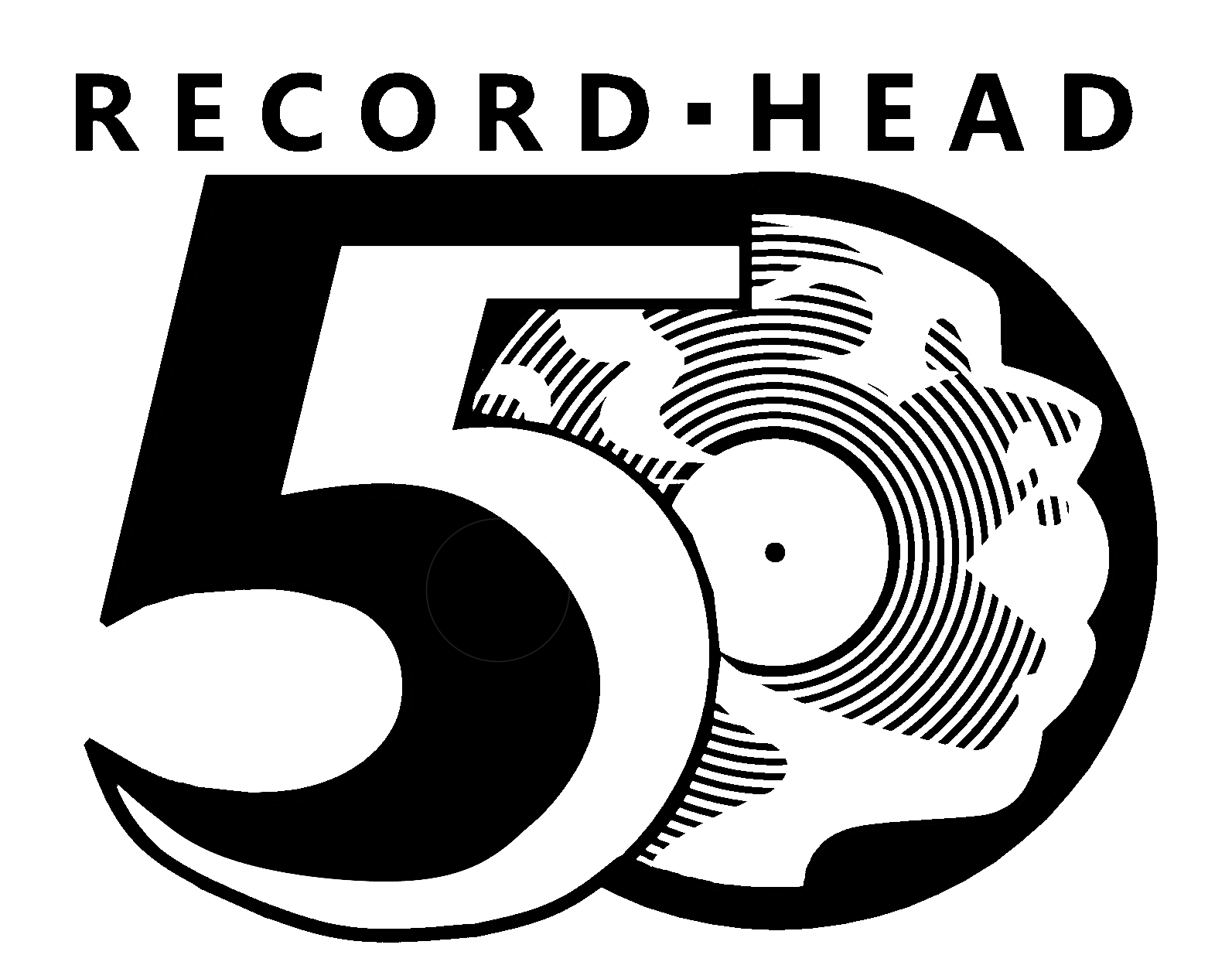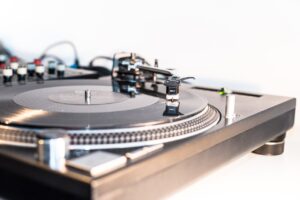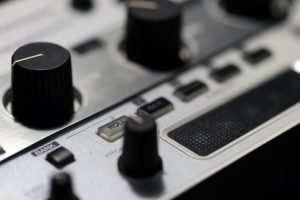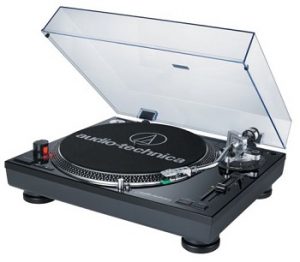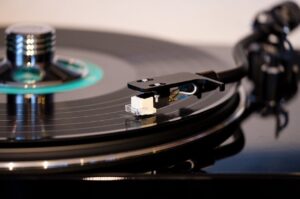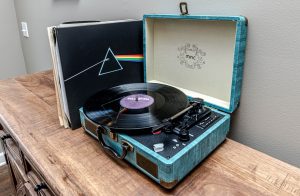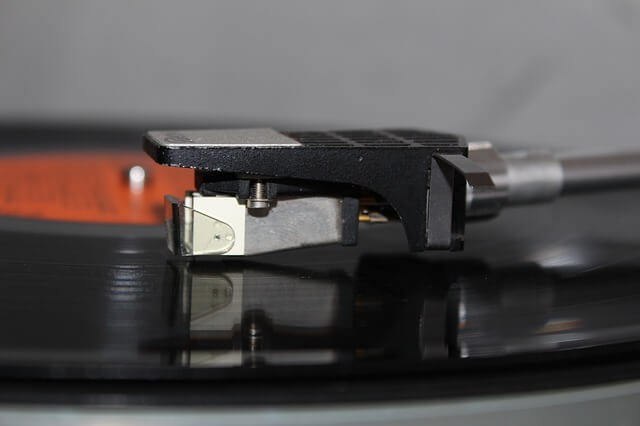
Spending a great deal of money on your vinyl record collection means nothing if you can’t listen to albums properly. Records and turntables are delicate tools that can provide you with the optimum listening experience. However, it’s important to understand how your turntable works to treat both your records and ears.
What Is the Difference Between a Stylus and a Cartridge?
The record player stylus and cartridge are parts of the same transmission system. Your turntable stylus is the needle making contact with your records. The stylus is attached to a cartridge that locks to the cantilever arm and headshell of your turntable for translation. The stylus sends information as a signal to an amplifier for play-through via speakers.
Types of Cartridges
Cartridges differ in their mount type, or how it attaches to the headshell and stylus. Each type of cartridge has its own type of arm:
- Standard: Two screws connect the cartridge and headshell.
- P-mount: The cartridge plugs into the headshell, then a single screw fastens the pieces.
- Universal: A cartridge with adapters for both arm types.
Types of Needles
There are three prominent types of needles for record players:
- Spherical: The most affordable and dullest needle.
- Elliptical: Polished needles with small diameters that track well with minimal pressure on the grooves.
- Fine-line: The most expensive needles with thin polished tips that provide the most sensitive groove tracking.
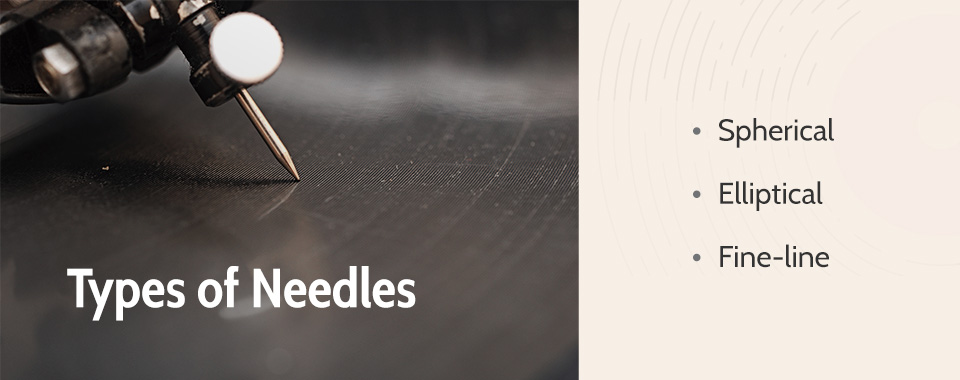
How Do the Stylus and Cartridge Work?
Turntable needles partner with cartridges to convert mechanical movement into an electrical signal. Magnets trigger a voltage in a bundle of wires near the back of a cartridge for positive and negative connections. How effectively a cartridge functions to transmit a signal depends on the following:
- Stylus shape: Shape affects how the stylus contacts the record’s grooves. A narrow stylus can track the most intricate modulations, allowing it to transfer the most detained musical information.
- Motor stability: A motor inside your turntable enables it to spin. A stable motor spins consistently so that the needle runs through the grooves at the right pace and hits every nook.
- Cantilever construction materials: The cantilever moves in response to the grooves then transfers the information to the magnet. Cantilever stability is crucial to sound reproduction, so you’ll need the right size and a reliable material like aluminum alloy.
- Turntable isolation (cutting back on unwanted vibration): The needle will jump out of the grooves if the turntable shakes around or if something bumps into it. Isolation platforms prevent unwanted motion.
Amplification
The level of power created by a needle, cartridge and motor is rather low. Turntables typically require an additional amplifier (phono stage preamp or stereo receiver) to advance voltage for use with home speakers.
Why Do the Cartridge and Stylus Matter?
The cartridge and stylus are the primary components of the sound transmission process. High-quality vinyl playback is all about getting a precise, accurate reading of the record’s grooves. A good needle and cartridge will send the cleanest signal to the receiver and speakers.
Remember that your needle makes direct contact with your records. The wrong needle can actually damage your records. For example, DJ needles are too heavy and can wear away the intricate grooves. Poor quality needles are more likely to break and scratch up your albums.
Turntable Cartridge Replacement
Changing the cartridge on a turntable is often more challenging than swapping out the needle. The cartridge is responsible for applying downward pressure to your records, so you want to avoid vinyl damage through calibration after installation. You need to replace your turntable cartridge only under the following conditions:
- Your current cartridge is lost or damaged
- You’re ready for an upgrade
- A compatible replacement needle is difficult to find (cartridges often come with new needles)
How Long Should a Turntable Stylus Last?
The standard across manufacturers is roughly 1,000 hours of playtime per needle. The frequency with which you change your stylus depends on how often you listen to your records. If you consider that a record is around 40 minutes, then that gets you roughly 1,500 records for every 1,000 hours or four records a day.
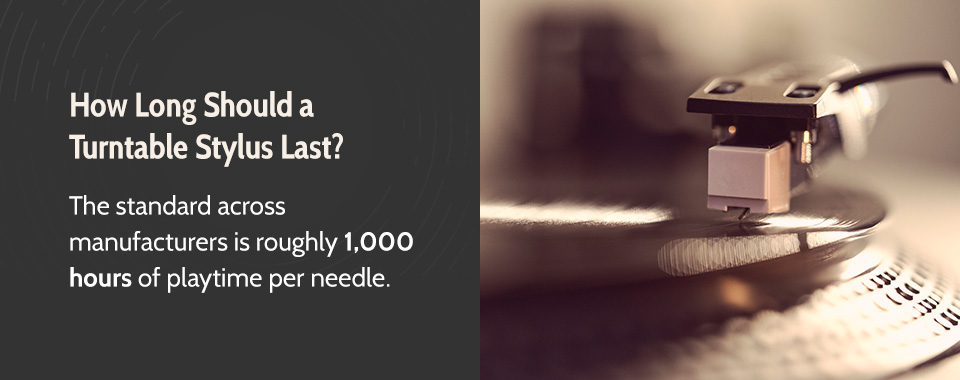
Replacing the Cartridge
Setting your cartridge up successfully will create better sound and minimal record wear. You need to consider that the turntable cartridge establishes the contact of your stylus to records. Follow these steps for cartridge replacement:
- Open dust cover and find the headshell/cartridge.
- Remove stylus from cartridge.
- Remove entire headshell from the tonearm.
- Release the cartridge by unscrewing turntable head screws.
- Unplug attached wires from the pins on the back of the cartridge.
- Match colors on new cartridge to the wire pins.
- Attach the cartridge headshell back to the tower with stylus installed.
Setting Downward Force
A number of turntable cartridges on the market come with tools for setting downward force. In the owner’s manual of your new cartridge, look for the recommended vertical tracking range. This number will be available in grams.
Consumers can purchase a tracking force scale to properly set downward pressure. Place your scale on your turntable mat, and turn your anti-skating knob to zero. Align your needle and tonearm over the scale and measure the downward pressure.
Adjust your counterweight until the scale matches the requirements of your new turntable cartridge. This upgrade should be completed carefully with attention to detail, as miscalculation can shorten the life of your record collection over time.
Contact Record Head for Vinyl and Turntables
Record Head is Milwaukee’s premier electronics and media shop. We offer buy, sell and trade for vinyl, studio equipment, speakers and more. Contact Record Head today to speak to our team about turntable cartridge upgrades and replacements.
